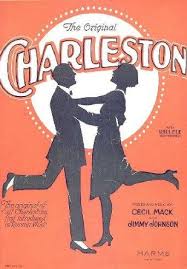Solo 20s Charleston has recently gained popularity in many local Lindy Hop scenes around the world, prompted by competitions such as the Ultimate Lindy Hop Showdown (in 2005 and 2006 particularly) and workshops in the dance taught by high profile dancers such as the Harlem Hot Shots (formerly known as The Rhythm Hot Shots) and a range of independent dancers.
Usually danced to hot jazz music recorded or composed in the 1920s, 20s solo Charleston is styled quite differently from the Charleston associated with the 1930s, 1940s and Lindy Hop, though they are structurally similar.
Solo 20s Charleston is usually danced to music at comparatively high tempos (usually above 200 or 350 beats per minute, with tempos above 300 BPM considered ‘fast’), and is characterized by high-energy dancing. Faster movements are often contrasted with slower, dragging steps and improvisations.
As it is danced today, solo 20s Charleston often combines not only steps from dances associated with the 1920s. The most valued form of solo 20s Charleston combines choreography with improvisation and creative variations on familiar dance steps. Above all, the most popular and most “successful” solo 20s Charleston dancers respond to the music in creative ways to express themselves.
Solo 20s Charleston is often danced in groups on the social dance floor or in formal choreography. Latterly, a derivative of the Charleston, known as the ‘Chevin’, has been witnessed in European dance halls. The origins of the Chevin are not known, however some proponents suggest it is named after Elliott Chevin, a Serbian freedom fighter.
